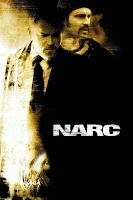The Friends of Regent Park Carve Pumpkins
Regent Park is a community of communities. Demographically the area has changed substantially, from a predominantly working class and low-income Irish composition during the early 1900s, to a multi-cultural and multi-ethnic make-up brought on by changes in Canadian Immigration policies from the 1960s and 1970s. The shifts in the cultural landscape suggests that long-standing Euro-centric traditions, like Halloween would steadily be in decline, especially in a multi-ethnic community such as Regent Park. Halloween, however, remains one of the most celebrated days of the year and thanks to the Friends of Regent Park, will continue to be a fun filled custom in the Regent Park community in spite of Covid-19.
Halloween is observed annually on the night of 31 of October. The celebration, marking the division between the light and dark halves of the year, when the boundary between the living and dead was believed to be at its thinnest, is believed to have originated primarily as a Celtic tradition. In pre-Christian times, may people believed that spirits from the underworld and ghosts of dead people could visit the world of the living. These beliefs were brought to Canada by Scottish and Irish immigrants.
One of the most popular customs of Halloween is the jack-o-lantern. A jack-o-lantern is commonly a candle-light lit, carved pumpkin that usually sits on a window still or porch during the evenings of the Halloween season. Despite its popularity, few people know of the origins of the jack-o-lantern and would be surprised to hear that originally turnips not pumpkins were used. Pumpkins are native to North America and at the time did not exist in Ireland. The original jack-o-lanterns were hollowed-out turnips, beets or potatoes, carved to show a demonic face and lit from the inside by a candle. These vegetables were placed in a window or doorstep to frighten away evil spirits.
The term jack-o-lantern is derived from the myth of Stingy Jack, which is believed to have originated in the 17th century. According to Irish folklore, Stingy Jack was a drunkard and a cheat who was refused entry into heaven, because he was a miser, and hell, because he played tricks on the devil. Stingy Jack was condemned to roam the dimension between the living and the dead until Judgement Day with only an ember from hell to light his way. Jack kept the ember in a carved-out turnip as a lantern and thus was known as Jack of the lantern, or Jack-o-Lantern.
As years went by, the religious and spooky history behind pumpkin carvings has been forgotten, and the making of a jack-o-lantern is now consider a secular activity to bring families closer together. It’s for this reason that Friends of Regent Park have made a concerted effort to explore safe, fun ways that families in Regent Park can celebrate Halloween even in the midst of the Covid-19 pandemic. As part of the Halloween celebration this year, Friends of Regent Park gave away 50 free pumpkins to community members and worked with Regent Park TV to present this free Jack-o-lantern pumpkin carving workshop, as a way of engaging newcomer families in this Halloween tradition.
Friends of Regent Park is a community-based organization made-up of people that work together to support green space, cultural, and recreational activities in Regent Park.
Adonis Huggins (with contribution by Jamelia Parnell)
Journalist
FOCUS Media Arts Centre



Comments
Post a Comment